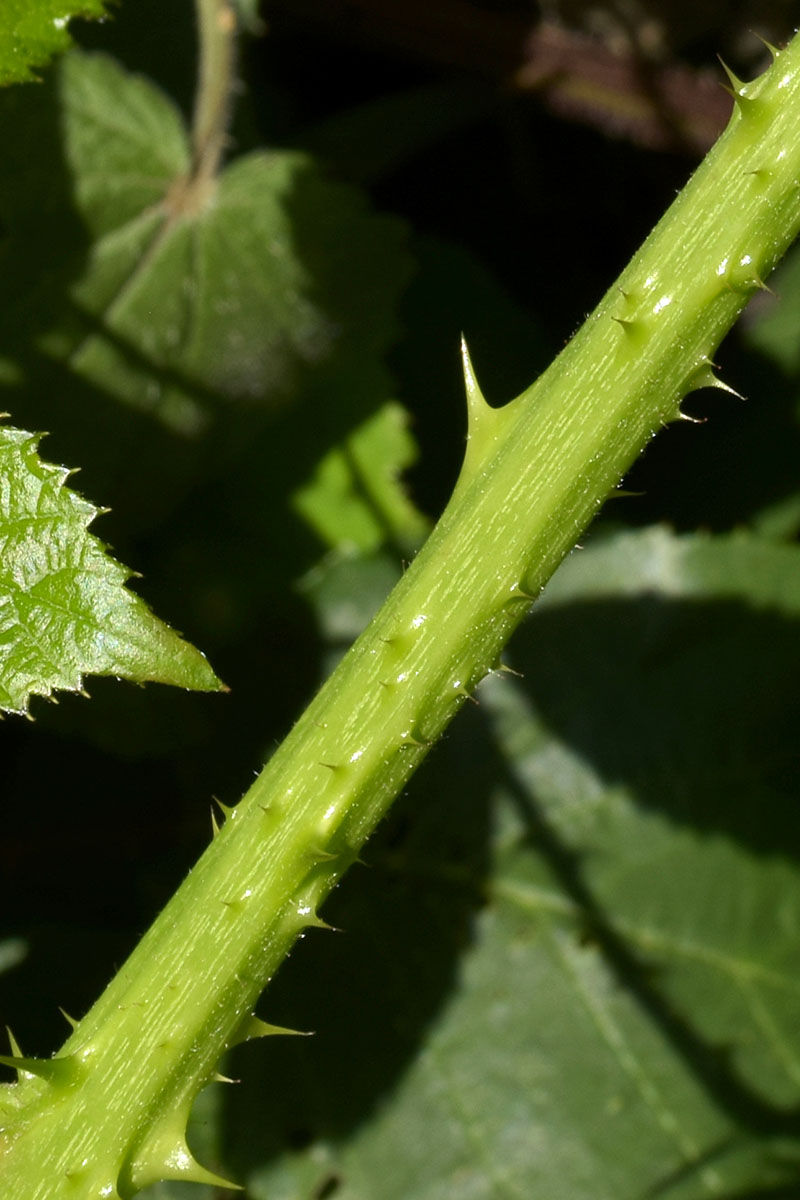
Rubus hastiformis – Series Micantes
back to Alphabetical index · Taxonomic index
This is a pink-flowered, red-styled, hairy and glandular bramble, which is relatively easy to recognise by the characteristic shape of its terminal leaflets. It has mainly been recorded along the the southern English counties, West Wales and from a few scattered localities in Ireland. It is a low-arching species which can form extensive patches in woodland.
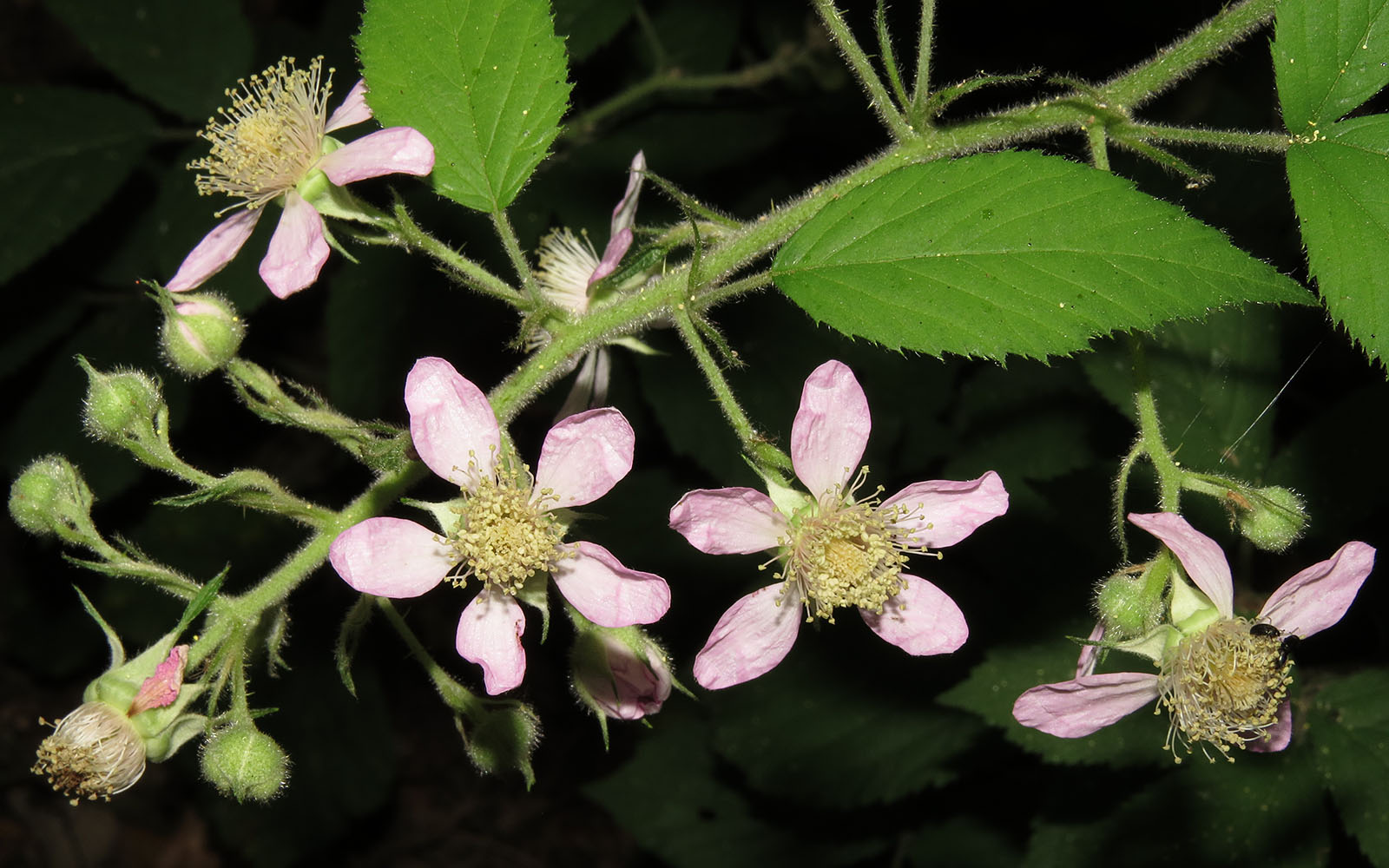
The panicle is narrowly pyramidal with long, widely divergent peduncles. It is 'lax', i.e. it often arches over or hangs downwards. It has some well-developed 3-foliolate leaves below and a few or sometimes several single narrow leaflets in the middle and at the base of the main part of the inflorescence. The rachis is always relatively straight above but may be zigzag below. The rachis and floral branches are densely hairy with abundant short-stalked glands, variable quantities of small pricklets and acicles and scattered slender prickles.

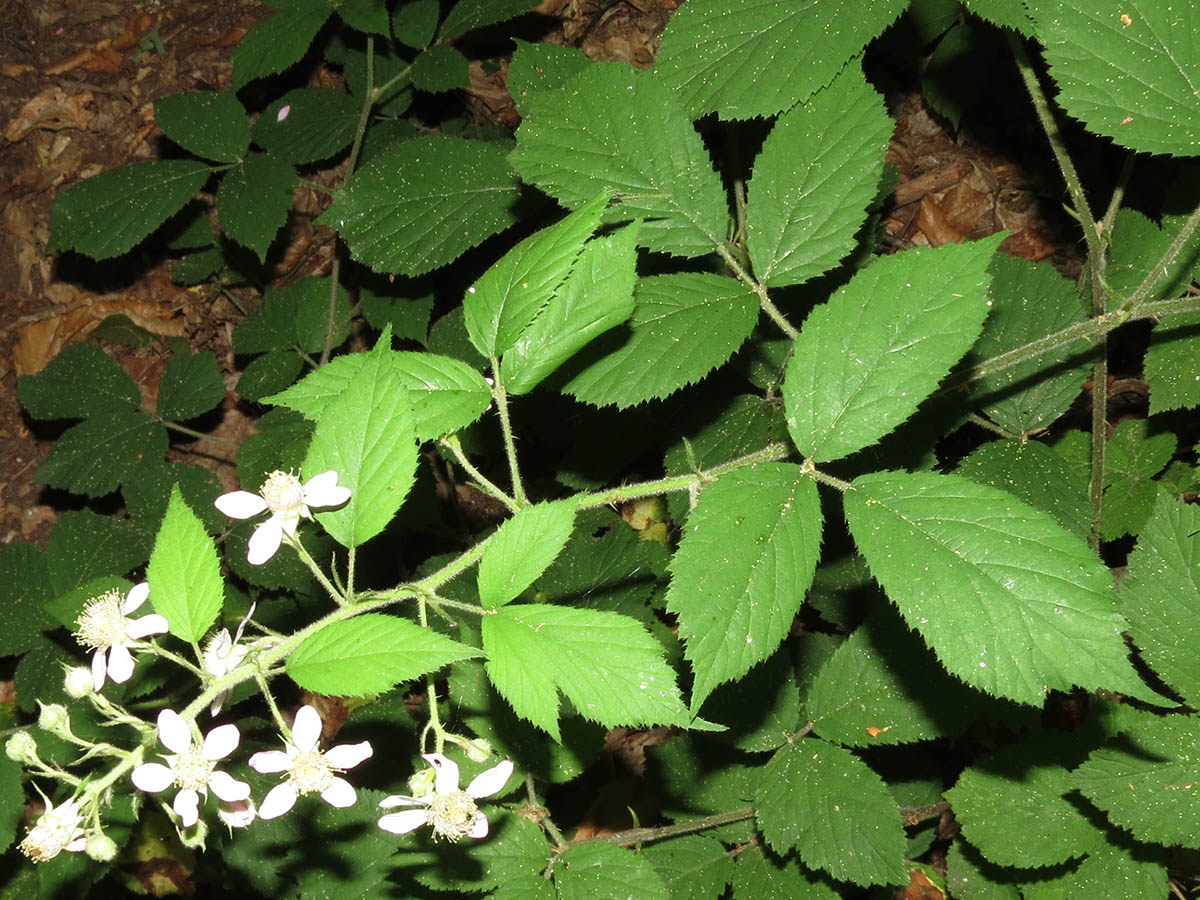
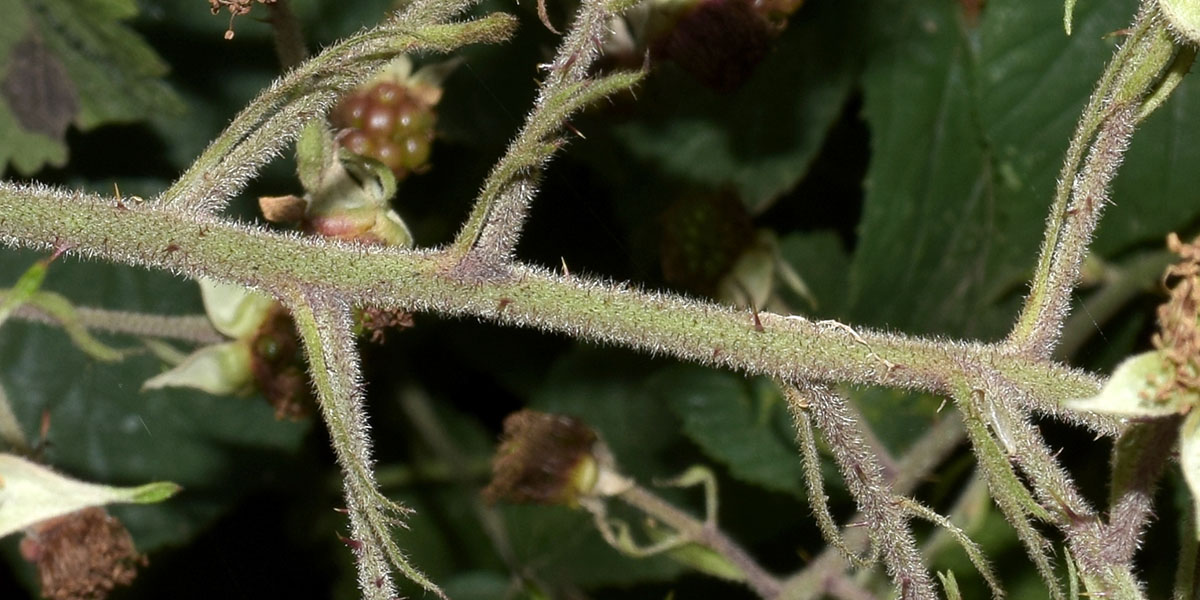
Flowers are c.2.5-3cm diameter with bright to pale pink elliptical to obovate petals, which are often somewhat concave, c.11-14 x 6-7mm. The filaments of the stamens are pale pink or white and distinctly longer than the styles; the published description notes that the anthers can sometimes be slightly hairy. Styles are usually clearly red-based with yellow tips. The young carpels and receptacle are hairy. Sepals are pubescent with red short-stalked glands and a few acicles; they are mostly reflexed in flower, but some become patent and eventually erect as the young fruit develops.

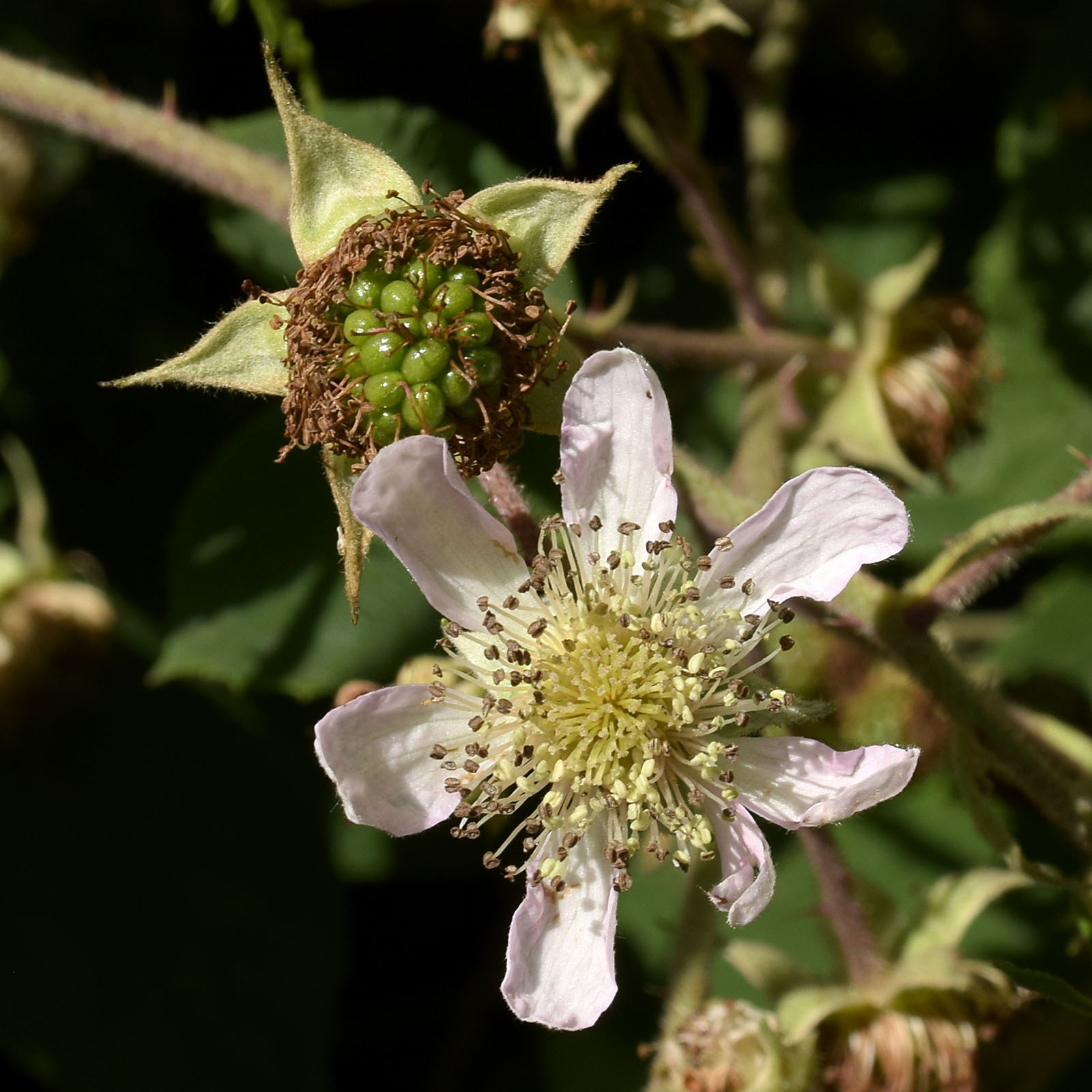


Leaves have 5 or sometimes 3-4 leaflets, which are a dull, mid to dark green in older leaves but a bright, fresh green in younger growth. Leaflets are sparsely hairy above and matt. The terminal leaflet has a distinctive appearance, being obovate with the widest part in the upper third of the leaflet, with a medium to long cuspidate apex, so 'truncate' in shape. The sides taper towards the base and are often nearly straight. The base is fairly broad and neatly rounded (entire or sub-entire), not distinctly narrowed and cuneate as it is in some other species with truncate leaflets. The margin is shallowly but unevenly serrate, especially either side of the apex where it may be quite distinctly incised. Usually the margin is flat. Younger leaves have narrower leaflets. The size of the terminal leaflet is 8-9(10) x 5-6(7)cm.


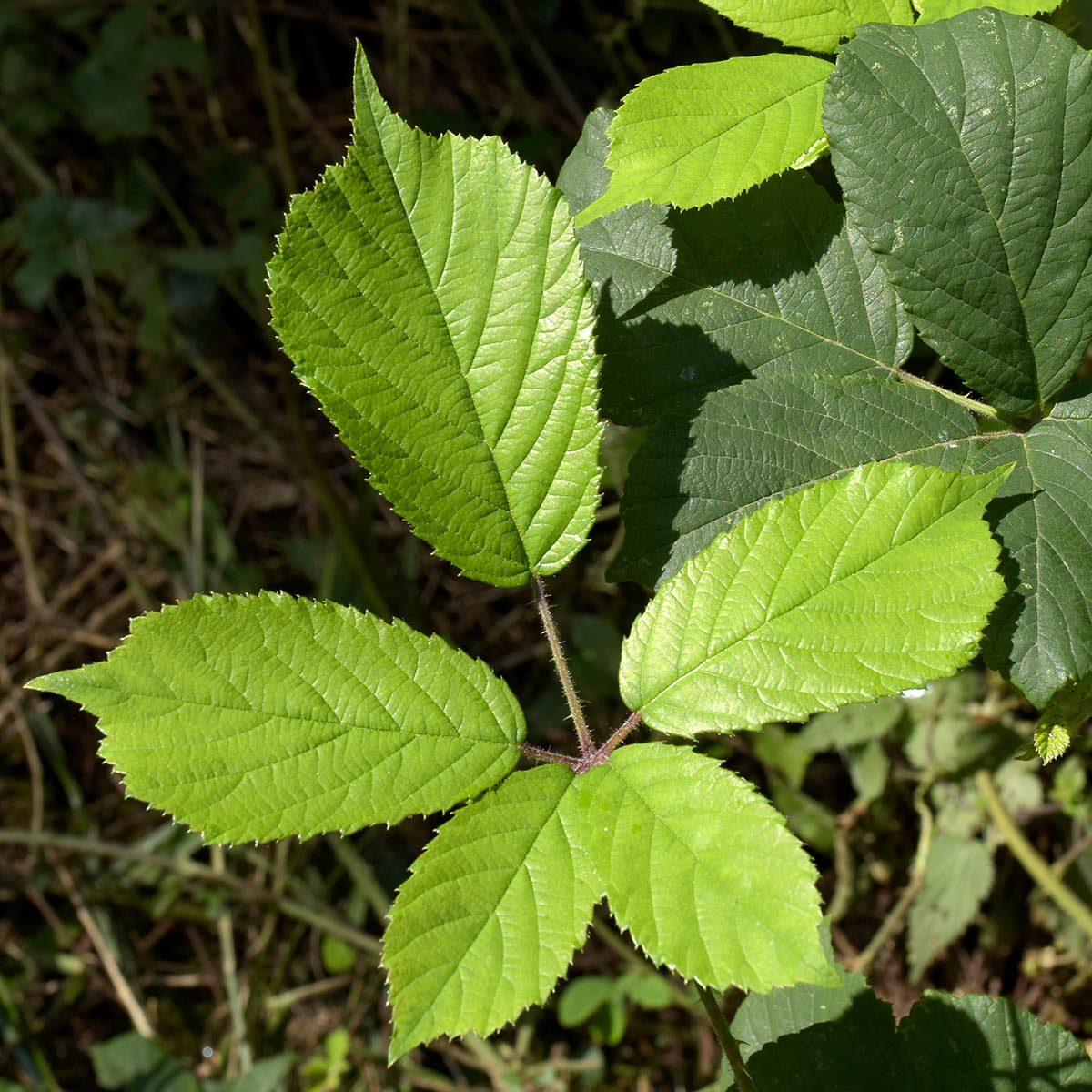


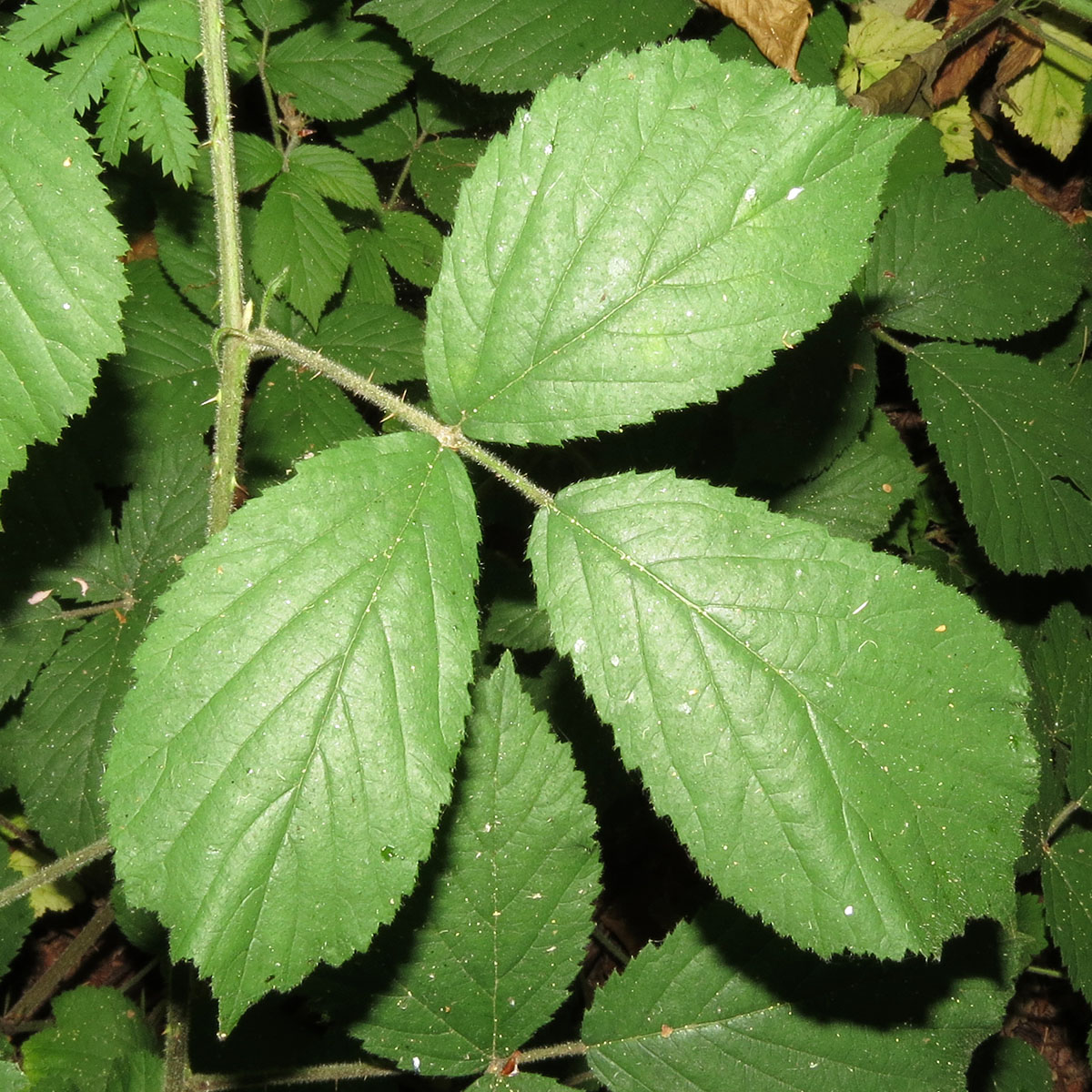
Leaflets are paler below, thinly pubescent when young but not felted, so feel relatively thin in texture. Older leaves can be come almost glabrous below.
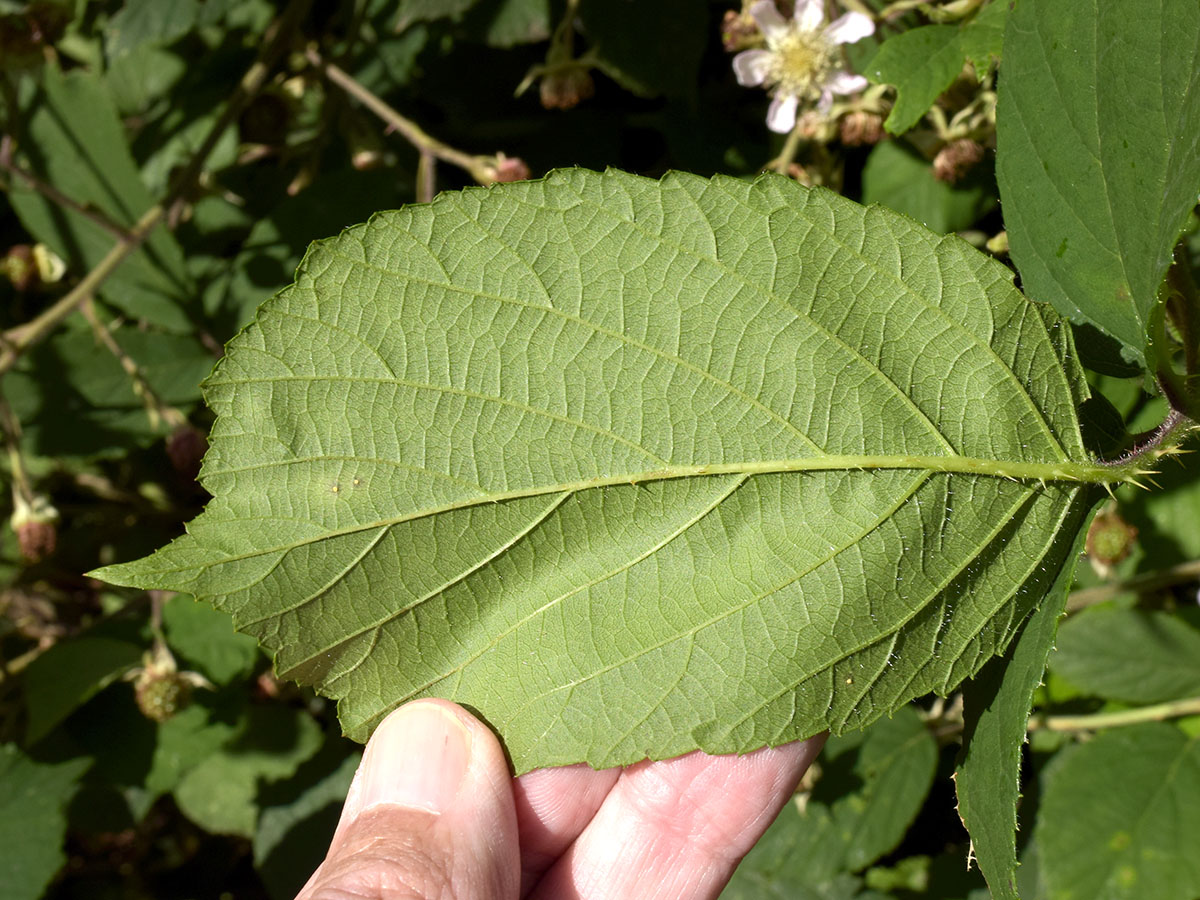
The first-year stem is bluntly angled with flat or weakly furrowed sides, green when growing under shady woodland, becoming red-spotted or blotched when exposed to the sun and may eventually turn dark reddish-purple. It is thinly to densely hairy with fairly frequent declining or curved prickles on the angles, which are usually shorter than the stem diameter. The stem has numerous small pricklets, glands and acicles; these vary in size but many of the pricklets and glands are shorter than the hairs.

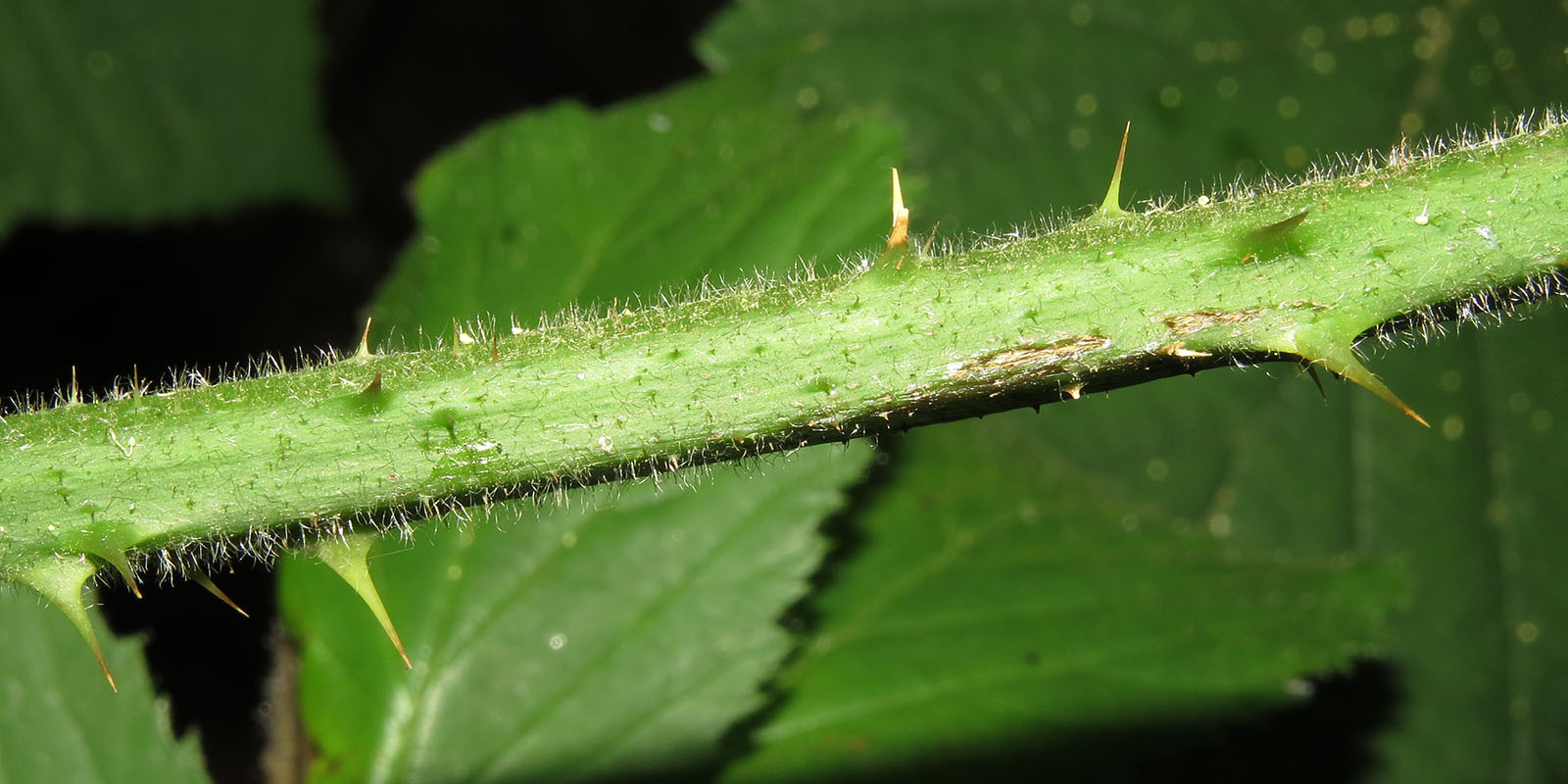

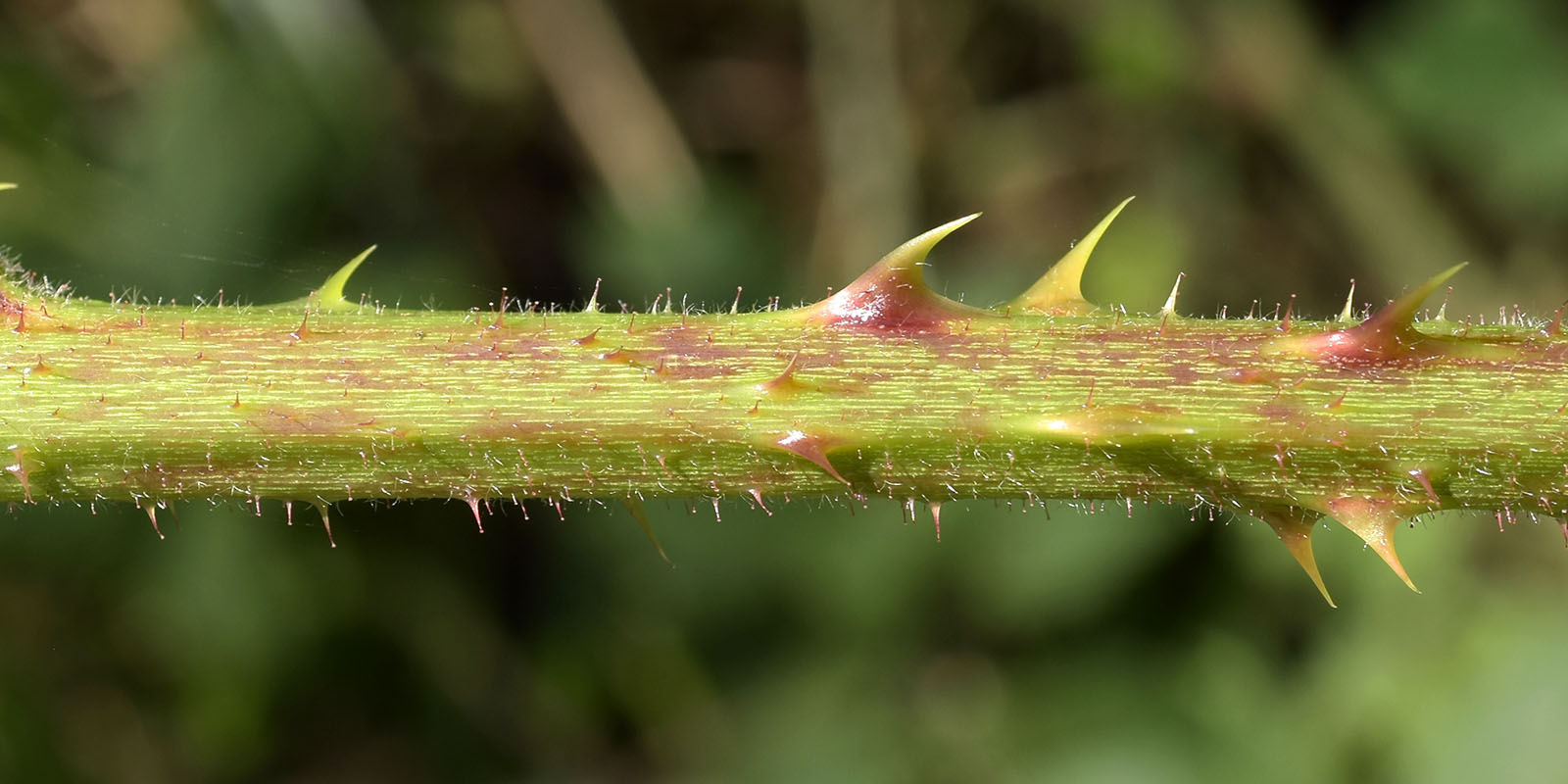
Two examples of younger, open-grown stems in late summer with atypical appearance.
